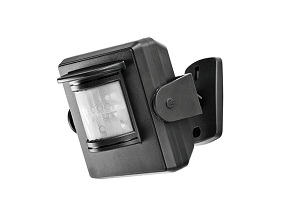Dual-technology sensors can reduce false alarms, and given their numerous benefits, outdoor sensors are becoming an important addition to residential intrusion systems, according to the latest market insight from IHS Markit. However, they are unlikely to replace the need for indoor sensors, given that even if an intruder triggers the outdoor sensor, the indoor sensors provide an added confidence about the true nature of the alarm.
Outdoor sensors allow homeowners in EMEA to push the protective perimeter away from their properties, which can help minimize damage caused by intruders breaking windows or damaging doors. This use of outdoor sensors is a pre-emptive attempt by homeowners to deter an intruder from entering the property, rather than deferring to reactive measures after an in-home intrusion has already occurred.
Of course, burglaries can also still happen when homeowners are present on their properties. For example, they might have left doors or windows on the ground floor open, making home intrusion easier. Outdoor sensors solve this problem, allowing homeowners to freely move around their homes, while ensuring that they will be alerted if an intruder approaches their properties from outside.
When homeowners are away from their properties, a combination of indoor and outdoor detection can provide added confidence. If their home alarms are triggered, they will know that it is in fact an intruder trying to break in, rather than a false alarm.
Even so, intrusion detection around the perimeter is still very difficult. Weather conditions can change rapidly and there are numerous variables that can trigger a sensor, such as passing animals, moving tree branches, rain, and changes in temperature and wind direction.
Researchers at IHS believe that video verification has the capability to expand the outdoor-detection market. Despite falling prices, adding outdoor sensors can still be expensive. In fact in EMEA, the average outdoor sensor is 13 times more expensive than an indoor sensor. Continuing higher prices will limit the overall number of properties likely to deploy outdoor sensors, as well as the average number of outdoor sensors used in each installation. By comparison, a dual-technology sensor for outdoor applications is just five times more expensive that its wireless indoor counterpart and eight times more expensive than its wired indoor counterpart. It is, therefore, still significantly more expensive than a standard intruder-alarm system.








